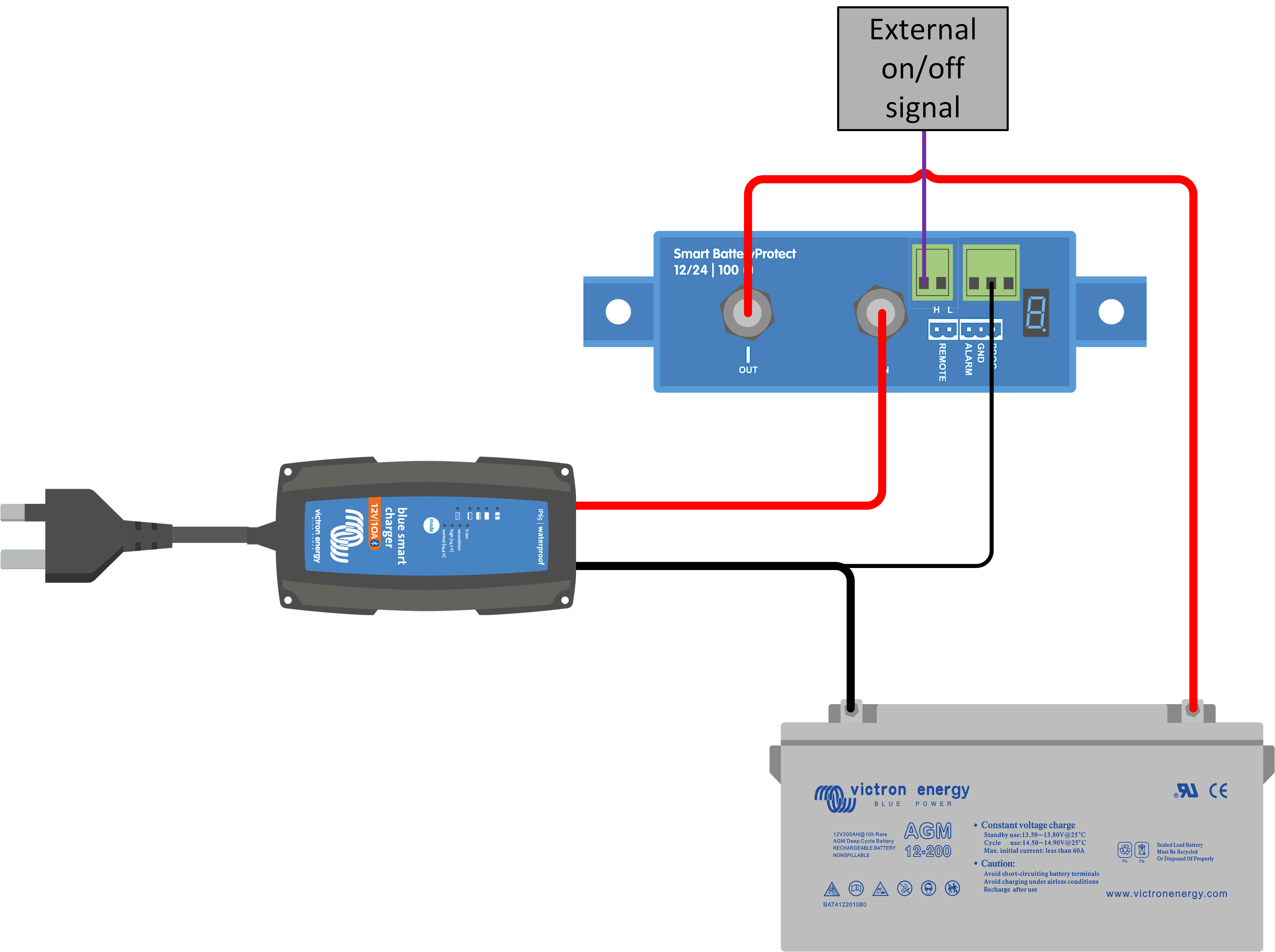Hi together,
I have a question concerning using a BatteryProtect (BP) to disconnect the charge source in a Lithium Battery System with VE.bus bms.
In the BP manual Figure 5 illustrates how to connect the BP for charging situation and it states that "uncontrolled reverse current will flow through a Battery Protect if Vout > Vin."
Now I wonder what happens, when the Voltage of the charger (Vin) drops, i.e. Solar charger when there is no sun or any other charging source that is swithched of. Wouldn't then the Voltage of the Battery (Vout) be higher and thus reverse current flow causing danger?
THanks a lot for your comments, I am abit affraid of burning down my RV...
cheers, Daniel

